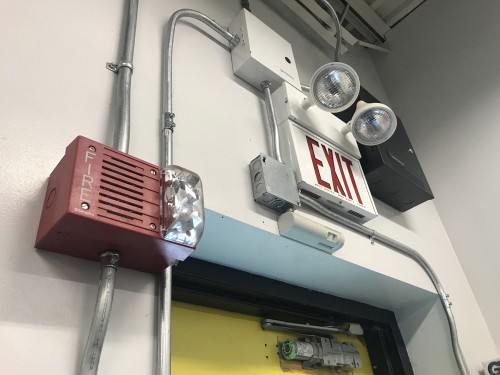When it comes to an emergency communication system, the more methods of communication, the better. But if you wan’t signs and screens and speakers, that results in an unsightly mess of devices cluttering up your wall. Plus, people aren’t sure which device they should be looking at. On top of that, all of these different devices are expensive to purchase and expensive to install. You don’t want to miss out on something that could potentially save lives, but you also have to stick to a budget and there’s a limit on the amount of wall space and network ports available. The solution is an all-in-one device.
What Is an All-in-One Device?
An all-in-one device is a single device that has multiple capabilities. For an emergency communication system, an all-in-one device should at minimum have speakers and a text board so that it can deliver both audio and visual messages. Some have more capabilities than that. For example, MessageNet’s Omni device has speakers, an LCD screen (which can display not just text-based messages, but also images and videos), a microphone, wireless panic buttons, a camera, and flashers, all built in to the same device. On top of that, there are many other benefits to having an all-in-one device.
Easy Installation
An all-in-one device is a lot easier to install. There’s only one device that needs to be mounted on the wall, only one device that needs cable pulled. The wall isn’t cluttered up with a lot of different devices that compete for space, attention, and power outlets.
Lower Cost
An all-in-one device may be more expensive than each single device individually, but the cost of devices with only one feature each adds up pretty quickly. Investing in one device saves money overall because the value an all-in-one device provides is far greater than any other device by itself. If you think about the cost of a single, one-feature device as the price you pay for that feature, then add them all up to see how much it would cost to have each of the features of the all-in-one device, the all-in-one device will end up being less expensive per feature.
Plus, an all-in-one device is much less expensive to install. If you hire an installer, they’ll only need to pull cable for one device and hang one device on the wall, saving you money on the installation cost as well. Some devices, like the MessageNet Omni, may not even require an installer because they’re so easy to hang.
Easier Maintenance
An all-in-one device is also a lot easier for your IT and maintenance departments to manage. With only one device needed per location, staff only have to troubleshoot and maintain one device instead of several. This also makes it easier to manage the network, since fewer devices need to be on it. IT and maintenance staff are often overworked as it is, so it’ll make their jobs a lot easier and free them up to focus on other tasks if they don’t have to manage and maintain more devices for your emergency communication system.
Messaging Convenience
Getting an emergency message out to those who need the warning is also a lot easier with an all-in-one device. The notification’s recipients don’t have to try to decide which device to look at if they’re all going off at once. They’ll know there’s only one device that they’ll need to look at in the event of an emergency. That one device will provide them with all of the information they’ll need and, in the case of the Omni, can even alert them to the fact that there’s a message that needs their attention with its flashers.
